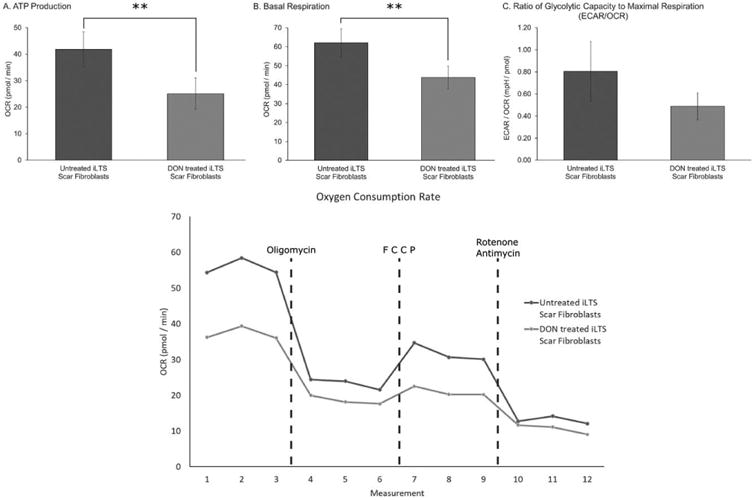Fig. 5.

DON reduces ATP production and basal respiration, measurements of oxygen consumption rate. (A) The ATP production of untreated iLTS scar fibroblasts contrasts with that of DON-treated iLTS scar fibroblasts, revealing a significant reduction with DON exposure as measured by changes in the OCR. (B) Displays the effects on basal respiration, which is significantly reduced in DON-treated iLTS scar fibroblasts compared to untreated iLTS scar fibroblasts. (C) The ratio of the ECAR to OCR shows a trend toward reduction in iLTS scar fibroblasts following treatment with DON, which did not reach significance within this limited cohort. (D) As in (C), (D) depicts the OCR measures for iLTS scar fibroblasts with and without DON treatment during a Seahorse XF24 (Agilent Technologies, Santa Clara, California, U.S.A.) experiment.
ATP = adenosine triphosphate; DON = 6-diazo-5-oxo-l-norleucine; ECAR5 = extracellular acidification rate; iLTS5 = iatrogenic laryngotracheal stenosis; OCR = oxygen consumption rate.
